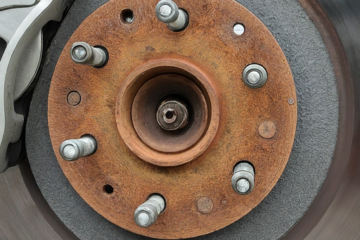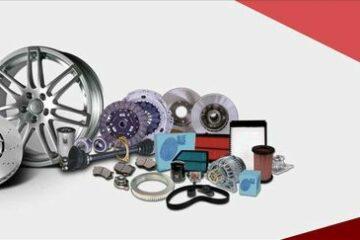The history of automotive parts dates back to the early days of the automobile. The first cars were very simple machines, and they only required a few basic parts. As cars became more complex, so did the parts that went into them.
In the early days, most automotive parts were made by hand. This was a slow and labor-intensive process, and it made parts very expensive. As manufacturing techniques improved, parts could be made more quickly and cheaply. This led to a wider availability of parts, and it also made it possible to mass-produce cars.
In the 20th century, there were many advances in automotive parts technology. New materials were developed, and new manufacturing techniques were invented. This led to the development of more efficient and reliable parts.
In recent years, there has been a trend toward using more electronic components in cars. This has led to the development of new types of parts, such as sensors, actuators, and electronic control units. These parts have made cars more fuel-efficient, safer, and more comfortable to drive.
- Early Beginnings (Late 19th to Early 20th Century):
- The first automobiles were essentially horse-drawn carriages with combustion engines, and their parts were basic and rudimentary.
- Around the late 19th century, components like carburetors, radiators, and basic engines started to be used in early vehicles.
- Mass Production and Standardization (Early to Mid-20th Century):
- As the automotive industry expanded, manufacturers began mass-producing vehicles, leading to the need for interchangeable parts.
- American engineer and entrepreneur Henry Ford played a crucial role in revolutionizing the production process with his assembly line techniques. This led to standardization and the concept of interchangeable parts, making repairs and replacements more manageable.
- Engine Development (Early to Mid-20th Century):
- The early 20th century saw significant advancements in engine technology. Engines evolved from simple one-cylinder designs to more complex multi-cylinder configurations.
- Innovations like overhead valves, fuel injection, and improved cooling systems made engines more efficient and powerful.
- Electrical Systems and Lighting (Early to Mid-20th Century):
- Electrical systems in cars became more important as various components started relying on electricity.
- Headlights, taillights, and electrical wiring systems were introduced, enhancing safety and usability.
- Suspension and Brakes (Early to Mid-20th Century):
- Early suspension systems relied on leaf springs, but the development of coil springs and shock absorbers significantly improved ride comfort and handling.
- Hydraulic brakes replaced mechanical ones, offering better stopping power and safety.
- Transmission and Gearboxes (Early to Mid-20th Century):
- Manual transmissions were common in early automobiles, but automatic transmissions gained popularity in the mid-20th century, offering more convenience for drivers.
- Manual transmissions were common in early automobiles, but automatic transmissions gained popularity in the mid-20th century, offering more convenience for drivers.
- Safety Features (Mid to Late 20th Century):
- Safety became a major focus in the automotive industry. Seat belts, airbags, and anti-lock braking systems (ABS) were introduced to enhance passenger protection.
- Safety became a major focus in the automotive industry. Seat belts, airbags, and anti-lock braking systems (ABS) were introduced to enhance passenger protection.
- Electronic Control Systems (Late 20th Century):
- The integration of electronic control systems became prevalent, leading to the introduction of engine control modules (ECMs) and other computerized systems for vehicle management.
- The integration of electronic control systems became prevalent, leading to the introduction of engine control modules (ECMs) and other computerized systems for vehicle management.
- Environmental and Fuel Efficiency Improvements (Late 20th Century to Present):
- With growing concerns about environmental impact and fuel efficiency, automotive parts underwent significant changes. Catalytic converters, hybrid systems, and electric vehicle components have become commonplace.
- With growing concerns about environmental impact and fuel efficiency, automotive parts underwent significant changes. Catalytic converters, hybrid systems, and electric vehicle components have become commonplace.
- Connectivity and Autonomous Driving (Present and Future):
- In recent years, automotive parts have been increasingly focused on connectivity features like GPS, Bluetooth, and smartphone integration.
- The rise of autonomous driving technology has led to the development of advanced sensors, cameras, and control systems.
Here are some of the most important automotive parts throughout history:
The internal combustion engine was invented in the late 19th century. It is the most important part of a car, and it provides the power to move the vehicle.
The transmission is responsible for transferring power from the engine to the wheels. It allows the car to go forward, backward, and neutral.
The brakes are used to slow down and stop the car. They are essential for safety, and they have become more sophisticated over time.
The tires are the only part of the car that touches the road. They are responsible for providing traction and handling
The electrical system powers the car’s lights, starter, and other components. It has become more complex over time, as more and more electronic components have been added to cars.
The history of automotive parts is a long and complex one. It is a testament to human ingenuity and engineering advancements, constantly pushing the boundaries of what’s possible in the world of transportation. As technology continues to progress, we can expect even more innovative and sophisticated automotive parts in the future.



